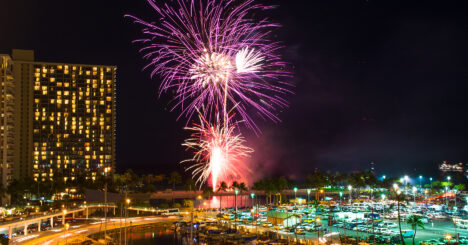The Landscape
This article summarizes key changes to shoreline policy and regulation implemented in the amended Shoreline Rules and Special Management Area (“SMA”) Rules that were approved by the Maui Planning Commission (the “Commission”) in November 2023 and, as of the date of publication, are pending adoption by the Mayor.
Hawai‘i’s Unique History of Shoreline Protection and Regulation
The first task for regulating and protecting the shoreline involves defining its boundaries. This task is challenging because of the shoreline’s inherently transient character under normal weather conditions and its mercurial nature during storms and seismic events. In the 1960s and 1970s, the Hawai‘i Supreme Court issued a number of decisions regarding the location of the shoreline boundary that took into consideration Hawaiian traditions and evidence from kamaʻāina (local residents). Recognizing the long-standing practice in Hawai‘i of allowing evidence from kamaʻāina testimony, the court established the shoreline according to ancient tradition, custom and usage “along the upper reaches of the waves as represented by the edge of vegetation or the line of debris.” Other jurisdictions rely on the mean high tide to define the shoreline.
With the shoreline defined by the high wash of the waves, the next task is to locate the shoreline on individual properties and balance the sometimes conflicting goals of safeguarding public access to the shoreline, protecting property rights, and preserving the shoreline. This balance was at the heart of the development of the amended Shoreline and SMA Rules that were approved by the Commission in November of 2023—nearly two years after the draft amended Rules were published by the Maui Planning Department (the “Department”) and more than four years after the Department hosted its first public presentations on the Rules.
Two-Tiered Framework
In the 1970s, Hawai‘i adopted a state coastal management program consistent with the federal Coastal Zone Management Act. Hawai‘i’s Coastal Zone Management Act is codified as Hawai‘i Revised Statutes (“HRS”) chapter 205A (“CZMA”). As the CZMA explains, the SMA was established to further “the state policy to preserve, protect, and where possible, to restore the natural resources of the coastal zone of Hawai‘i.” The SMA generally contains the land extending inland from the shoreline to a certain point as mapped on each the island. “Development,” as broadly defined under the CZMA, within the SMA is subject to special permitting requirements established under the CZMA and further refined by rules enacted at the county level.
Consistent with the Hawai‘i Supreme Court’s decisions, the CZMA defines the shoreline as the “upper reaches of the wash of the waves, other than storm and seismic waves, at high tide during the season of the year in which the highest wash of the waves occurs, usually evidenced by the edge of vegetation growth, or the upper limit of debris left by the wash of the waves.” CZMA also defines the shoreline area and provides for shoreline setback lines not less than 40 feet inland from the shoreline.
Within these and other fixed points in the CZMA, the counties have considerable discretion to regulate and control development as long as the policies, ordinances, and rules adopted at the county level are consistent with state law and do not exceed an express grant of authority to enact. Importantly, the CZMA expressly authorizes the counties to establish shoreline setbacks consistent with the CZMA and other applicable state law. Maui County has delegated its authority to establish rules for the shoreline area and SMA under the CZMA to the Maui Planning Commission, Moloka‘i Planning Commission, and Lāna‘i Planning Commission for each respective island and area.
The Commission’s SMA and Shoreline Rules are codified in Title 12, chapters 202 and 203 of the Maui County Administrative Rules.
The New Rules
Rule Amendments Approved by the Commission in November 2023
On January 11, 2021, the Department published proposed amended Shoreline Rules for the Island of Maui. The initial version of the proposed Shoreline and SMA Rules proposed a substantial overhaul of the existing rules and garnered widespread attention from the public. Years of public presentations, hearings, and discourse followed before amendments were approved by the Commission on November 14, 2023.
Key Changes to the Shoreline Rules
Erosion Hazard Line
The most significant change in the Shoreline Rules is the adoption of the “Erosion Hazard Line” to calculate the shoreline setback and determine the area that is subject to the Shoreline Rules. The prior Shoreline Rules determined the shoreline setback using erosion rates based on historical data and empirical evidence of the upper reaches of the waves. The amended Shoreline Rules establish the shoreline setback using the Erosion Hazard Line (“EHL”), which is based on sea-level rise modeling adopted by the Hawai‘i Climate Change Mitigation and Adaptation Commission as part of the 2017 Hawai‘i Sea Level Rise Vulnerability and Adaptation Report. The EHL will be mapped by the Department and adopted together with the Shoreline Rules. In basic terms, the EHL modeling applies historical erosion rates and—assuming erosion will continue at the same rate through the year 2100 as it has for the past 80 years—overlays the historical data with a formula to estimate the magnitude of retreat of an all-sand shoreline in response to projected sea level rise.
Authors’ Note: Readers may be familiar with the Hawai‘i Sea Level Rise Viewer that depicts the EHL. The Viewer is frequently used in connection with the recent update to the Mandatory Seller Disclosures in Real Estate Transactions Law in 2021, codified by HRS section 508D-15, that requires real estate transactions within the State to disclose the risk of sea level rise to the property.
Where the EHL is mapped, the EHL is the default shoreline setback line. An applicant may apply to use an alternate shoreline setback line by obtaining a shoreline certification pursuant to state law in which case the setback line would be established by applying the distance used to map the EHL from the shoreline to the certified shoreline or, if the Planning Director determines the shoreline is accreting or known geologic information indicates the lot is erosion resistant, the shoreline setback line may be established using the method for lots where the EHL has not been mapped.
Where the EHL has not been mapped, the shoreline setback line will generally be two hundred feet from the shoreline, subject to different calculations for lots with minimum lot depths, irregularly shaped lots, and lots where topographic features inhibit the safe conduct of a certified shoreline survey. Since the Department’s mapping of the EHL is not publicly available as of the date of this article, it is unclear how much of the shoreline will be mapped prior to the adoption of the amended Shoreline Rules. The amended Rules allow the Department to make non-substantive digital mapping alignment adjustments after the maps are adopted together with the Rules.
The amended Shoreline Rules provide a procedure for an applicant to request an amendment to a shoreline setback line established by the EHL or the approximate shoreline mapped by the Department. Obtaining an amendment requires the Planning Director to find based on clear and convincing evidence that the actual setback for the parcel differs from the setback established by the EHL.
New Exceptions to Approval and Defined Allowable Activities Within the Shoreline Area
Assessment and Determination by the Planning Director. All structures and activities located or proposed to be located within the shoreline area are subject to the Planning Director’s assessment and determination that the proposed structure or activity is permitted under the rules. The Shoreline Rules provide limited exceptions for proposed activities and structures that are exempt from assessment and determination by the Planning Director.
Notable Exceptions. The amended Shoreline Rules identify exceptions for activities and structures within the shoreline area that do not require approval by the Planning Director but do require implementation of relevant best management practices published by the Department. Certain exceptions further require the applicant to submit a declaration to the Department on forms provided by the Department that “may establish action-specific Best Management Practices and other appropriate restrictions”. As of the date of this article, sample declaration forms have not been made available. The Commission approved exceptions for routine uses of land within the shoreline area that do not impair shoreline access or are subject to compliance with best management practices, including transfer of land title and rights (e.g., easements, covenants), normal and customary agricultural activities, testing related to the State Historic Preservation Division, and traditional native Hawaiian cultural practices. Other notable exceptions approved by the Commission include:
- During the applicable timeframe of a Governor’s or Mayor’s disaster or emergency declaration or proclamation, with necessary work permits and use of best management practices to protect natural and cultural resources, the removal and disposal of disaster debris, emergency repairs to roofs and windows, and emergency installation of temporary, protective measures to secure habitable structures that do not harden the shoreline;
- Nonstructural interior maintenance, repairs, and renovations to existing, lawfully established structures that do not involve expansion and ground disturbance, and do not increase the density or intensity of use (e.g., paint, floors, carpets, cabinets, interior walls and doors), limited to a cumulative valuation of less than $500,000 in any 24-month period for a single ownership on a single lot or set of lots composing a unified building site;
- Nonstructural exterior maintenance, repairs, and renovations to existing, lawfully established structures that do not involve ground disturbance (e.g., doors, windows, shutters, siding, and roof repairs or replacement), limited to a cumulative valuation of less than $500,000 in any 24-month period for a single ownership on a single lot or set of lots composing a unified building site;
- Emergency protection of water, wastewater, or stormwater infrastructure managed by the Department of Water Supply, Department of Environmental Management, or Department of Public Works when the infrastructure is at imminent risk of failure that would substantially affect public health or safety, including significant water loss or contamination of surface water, land, or water supply; and
- Patching, repairs, and resurfacing of existing driveways and parking lots less than 1,000 square feet.
Notable Allowable Structures and Activities. Upon approval by the Planning Director, enumerated structures and activities are allowable within the shoreline area. The Commission approved new allowable activities and structures, including the following:
- Structural and nonstructural repairs (excluding those caused by coastal hazards), renovations, and improvements to a lawful nonconforming structure that are less than 50 percent of the current replacement cost of the structure over a ten-year period or authorized by SMA use permit, do not enlarge or expand the structure or intensify the use, and are otherwise permitted;
Authors’ Note: For repairs in excess of these thresholds, applicants may seek an SMA use permit to allow the repairs.
- Structural and nonstructural repairs to, and restoration of, a lawful nonconforming structure in response to damage by fire, insects, wind, named hurricanes, or tsunamis with disaster declaration, accidental means, or other calamity excluding all other coastal hazards, provided that the repairs or restoration are proportionate to the damage, do not enlarge or expand the structure or intensify the use and are otherwise permitted;
- Structural and nonstructural repairs to a lawful nonconforming structure that are proportional and directly related to damage by coastal hazards that are chronic or recurring (including water, storm surges, high tide, flooding, erosion, sea level rise, subsidence, or point and non-point source pollution), provided that the repairs are limited to 10 percent of the current replacement cost of the structure over a cumulative ten-year period, are in the same location or are relocated mauka or in an area less vulnerable to coastal hazards, do not enlarge or expand the structure or intensify the use, and are otherwise permitted; an applicant seeking approval from the Planning Director for this type of use or structure must agree to defend, indemnify, and hold the County of Maui harmless for loss, liability, claim or demand arising out of damage to the structure or activities from coastal natural hazards and coastal erosion;
Authors’ Note: For repairs in excess of these thresholds, applicants may seek a variance to permit the repairs.
- Repair and maintenance of a lawfully constructed shoreline hardening structure that protects a habitable structure or public structure or infrastructure may be repaired or maintained with like-for-like materials up to 50 percent of the shoreline hardening structure’s replacement value over a cumulative ten-year period; an applicant seeking approval from the Planning Director for this type of repair or maintenance must provide a coastal hazard mitigation plan, which contains an avoidance alternative, as part of the application; and
- Adaptation of existing lawful or lawful nonconforming structures including relocating a structure mauka of the shoreline setback line, reducing the size of a structure, and elevating a structure within the existing footprint.
Key Changes to the SMA Rules
Categorical Exemptions
Any proposed action within the SMA is subject to an assessment and determination by the Planning Director as to whether it is a development that requires a special management area use permit or minor permit or is an exempt action. The Commission approved amendments to the SMA Rules that create categorical exemptions, called “no needs” by the Department, for actions that are deemed to not have a cumulative impact or a significant environmental ecological effect on the SMA because of the minimal nature of these actions. Proposed actions within the SMA that fall within a categorical exemption are not subject to an assessment by the Planning Director but may be subject to the implementation of relevant best management practices published by the Department. Certain categorical exemptions also require the submission of a declaration form provided by the Department, which may impose action-specific best management practices and other appropriate restrictions. As of the date of this article, sample declaration forms have not been made available.
The Commission approved categorical exemptions for routine uses of land within the SMA that do not have a cumulative impact or a significant environmental or ecological effect on the SMA including transfer of land title and rights (e.g., easements, covenants), normal and customary agricultural activities, testing related to the State Historic Preservation Division, and traditional native Hawaiian cultural practices. Notable categorical exemptions approved by the Commission include:
- Nonstructural interior maintenance, repairs, and renovations to existing, lawfully established structures that do not involve expansion or ground disturbance and do not increase the density or intensity of use (e.g., paint, floors, carpets, cabinets, and interior walls and doors) limited to a cumulative valuation of less than $500,000 in any 24-month period for a single ownership on a single lot or set of lots composing a unified building site;
- Driveway and parking lot pavement patching, resurfacing, resealing, restriping, and repairs, and pavement reconstruction not over 1,000 square feet;
- Exterior installation on and maintenance, repairs, and renovations to existing, lawfully established structures that do not involve ground disturbance and are nonstructural (e.g., signage, wireless antennae and other transmission equipment, satellite dishes, and roof mounted equipment such as photovoltaic and solar panels);
- Site improvements, except in coastal dunes, involving limited ground disturbance (minor surface grading and grubbing, installation of turf, shallow landscaping, and irrigation and installation of asphalt or concrete slabs and driveways, up to six inches deep, up to 1,000 feet), and no more than once in a 24-month period;
- Site improvements, except in coastal dunes, involving limited ground disturbance more than six inches deep and up to sixteen square feet no more than once in a 24-month period for holes and trenching (e.g., installation, removal or maintenance of trees and shrubs, utility pedestals, lines and poles, ground signs, walls and fences up to four feet in height, mailbox posts, and solar panels), and excluding new wireless telecommunications towers, windmills and wind turbines;
- Nonstructural exterior maintenance, repairs and renovations to existing, lawfully established structures that do not involve ground disturbance (e.g., doors, windows, shutters, siding, or roofs) limited to a cumulative valuation of less than $500,000 in any 24-month period for a single ownership on a single lot or set of lots composing a unified building site;
- Emergency protection of water, wastewater, or stormwater infrastructure managed by the Department of Water Supply, Department of Environmental Management, or Department of Public Works if such infrastructure is at imminent risk of failure that would substantially affect public health or safety, including significant water loss, or contamination of surface water, land, or water supply; and
- During the applicable timeframe of a Governor’s or Mayor’s disaster or emergency declaration or proclamation, with necessary work permits and use of best management practices to protect natural and cultural resources, the removal and disposal of disaster debris, emergency repairs to roofs and windows, and emergency installation of temporary, protective measures to secure habitable structures.
Effect of an Unresolved Enforcement Action in a Condominium Project
Under the amended SMA Rules, an application is automatically incomplete at any stage during the application process if it relates to land use within a condominium property regime that is subject to an unresolved enforcement action by the Department.
Signage for a Public Hearing
For applications where a public hearing is
required, the amended SMA Rules require the applicant to prepare for the Department’s review a notice of application with a legible location map using a form provided by the Department and to post a nine square-foot project notice sign describing the proposed action, name of applicants and parcel owners, contact information for the applicants or their representatives, among other requirements, along the main access road for the property.
Emergency Permit Procedures
The amended SMA Rules establish new special management area emergency permit procedures. A temporary measure may be allowed for no more than 180 days, for which the Planning Director may approve a time extension upon the Planning Director’s determination that the permit holder is making adequate progress toward completing a permanent measure and cannot reasonably do so within the time of the emergency permit.
WHAT’S NEXT?
Next Steps for Adoption
The Department will complete the task of mapping the EHL along the Maui shoreline. To become effective, the amended Shoreline and SMA Rules will need to be signed by the Mayor and approved as to form by the Corporation Counsel.
These Rules Are Legislative in Nature, Subject to Change
The shoreline and coastal areas are special resources serving cultural, ecological, recreational, economic, and aesthetic functions to the people. Upon adoption, the Shoreline and SMA Rules will remain susceptible to amendment of any scale as is the nature of legislation. Baked into the definition of the EHL is the Commissioners’ expectation that the Rules will be reviewed as the scientific model it is based upon changes:
“. . . The EHL must reflect the best available science as published in peer reviewed literature such as the Hawai‘i Climate Change Mitigation and Adaptation Commission’s 2017 Hawai‘i Sea Level Rise Vulnerability and Adaptation Report, as accessible within the Hawai‘i Sea Level Rise Viewer hosted by the Pacific Islands Ocean Observing System. The EHL and resulting setback mapped by the Department may need to be updated to reflect future updates and reports based on best available science, with such updates being subject to review by the commission within 12 months.”
(Proposed) MAUI CNTY. CODE § 12-203-4. Science and the Commission’s determination of the “best available science”, too, will remain susceptible to change.
This article was originally published in the Spring/Summer 2024 issue of ke kumu, Cades Schutte’s client newsletter.





